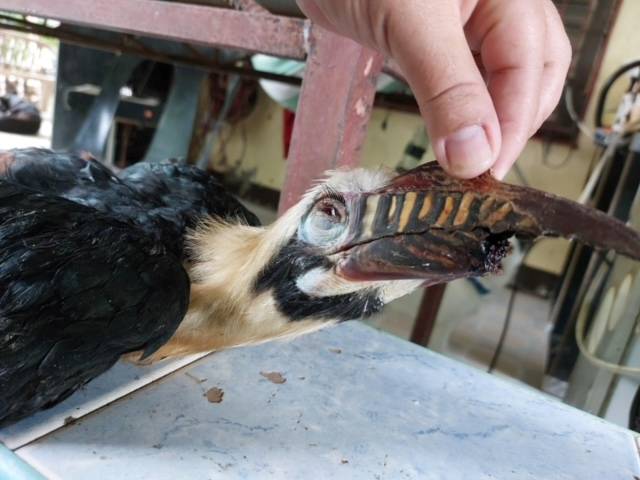Visayan hornbill killed by a slingshot in Antique

ILOILO CITY – Authorities of Sibalom town in Antique were looking for the person responsible for the death of a male Visayan Tarictic Hornbill, a critically endangered species, in the forest of Sitio Suyan, Barangay Tigbalua 1.
The bird, which was named “Ulam” by a resident after it was found on August 31, suffered from slingshot wounds while its lower beak was severed, apparently when it was hit by a stone used in a slingshot.
According to Mark Raymond Combong, the village chief of Tigbalua 1, “Ulam” was already weak when a resident of Sitio Suyan found it in the middle of the forest. The bird died the following day, September 1.
Combong said they were saddened by the senseless death of an endangered bird species that they had tried to save.
He warned persons who target critically endangered species about the penalties provided by the law.
Penalties for violators
Under Republic Act 9147, or the Wildlife Resources Conservation and Protection Act, any person who is found guilty by the court of killing species listed as critically endangered shall be imprisoned for a minimum of six years and one day to 12 years, and/or can be fined from 100,000 to P1 million.
Mary Joy Vego, a resident of the village, said it was her nephew who found and brought Ulam to local authorities for treatment.
In a social media post on September 1, she showed the photos of the dead bird she named “Ulam” and the wounds it sustained.
The remains of the bird would be turned over to the National Museum of Anthropology, Combong said.
According to Bird Life International, Visayan Hornbills are classified as endangered species since they face a rapid population decline because of deforestation and hunting.
Known for its large beaks, the Visayan Tarictic Hornbill (Penelopides panini) thrives on the lowland and forests of Panay and Negros islands.
The hornbills’ necks stand as support to their large beaks, which they used for hunting and for making their nests.
Another salient features of the hornbill is the loud calls or sounds they produce, hence the term Visayan “ta-rik-tik” was coined to identify them.

















